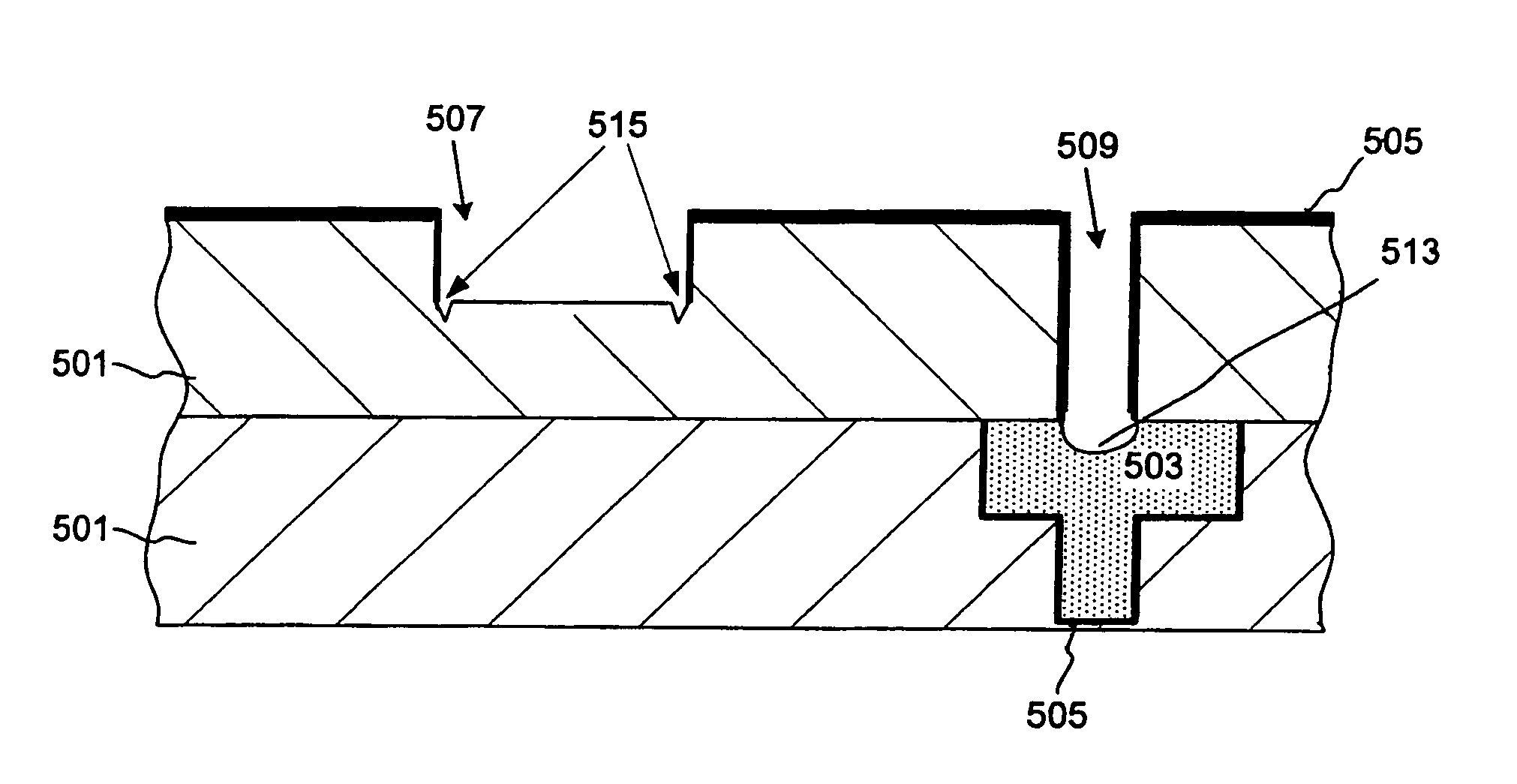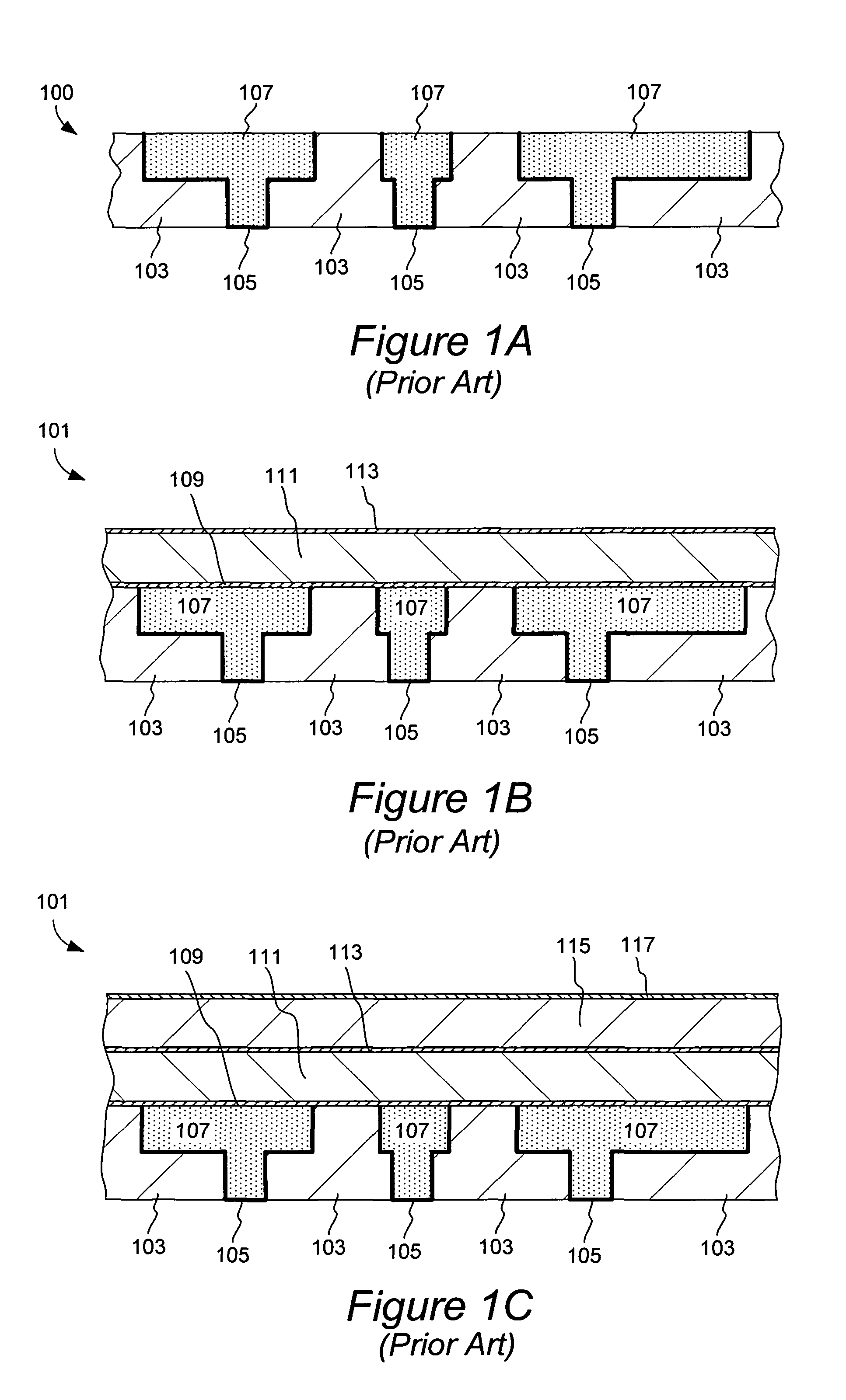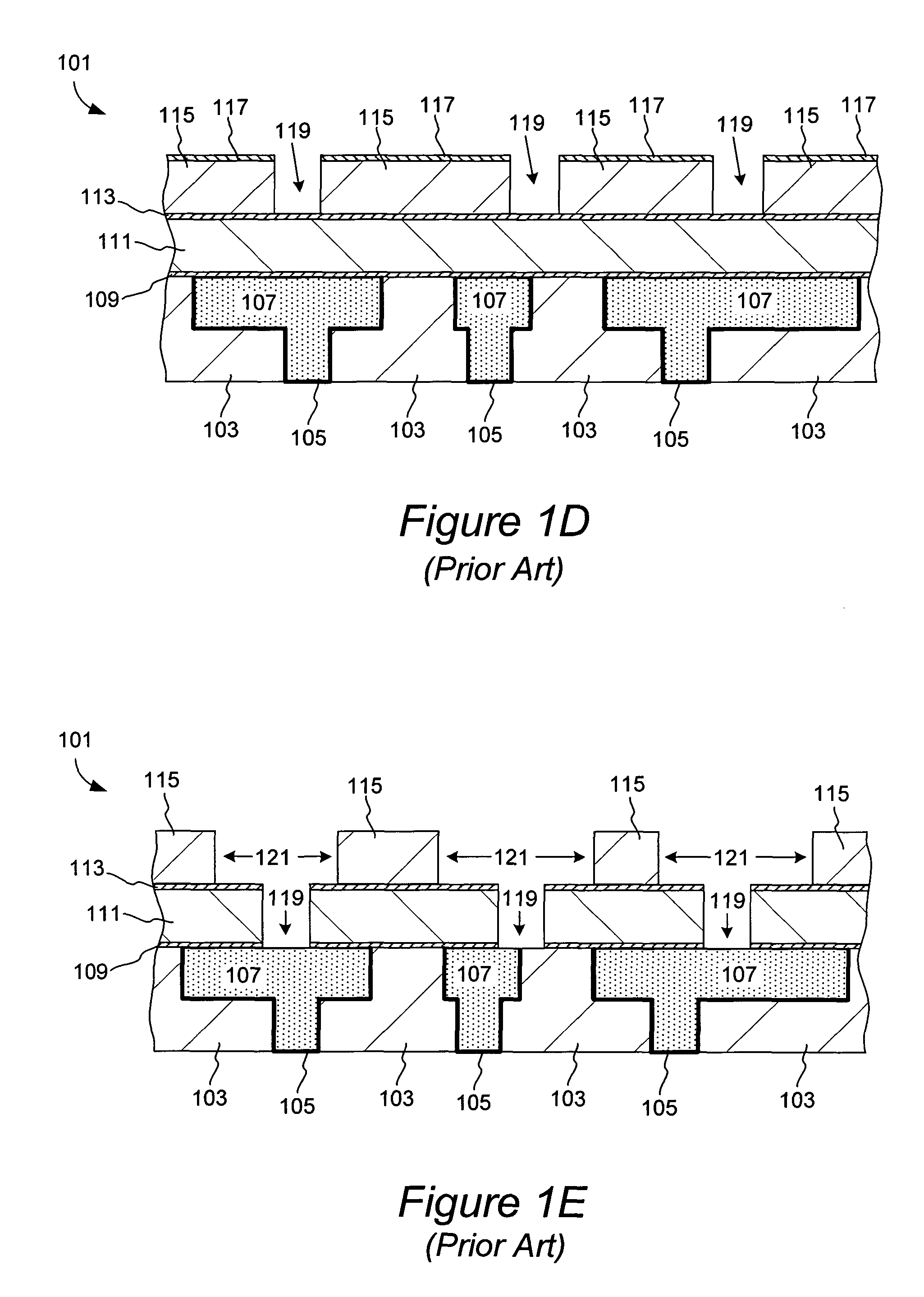Resputtering process for eliminating dielectric damage
a dielectric layer and etching technology, applied in vacuum evaporation coatings, semiconductor devices, coatings, etc., can solve the problems of reliability problems, insufficient coverage of via sidewalls, low uniformity of deposited layers, etc., to minimize the damage to the dielectric layer, improve the etching rate, and improve the quality of deposited layers
- Summary
- Abstract
- Description
- Claims
- Application Information
AI Technical Summary
Benefits of technology
Problems solved by technology
Method used
Image
Examples
Embodiment Construction
[0032]The etch-back of the barrier layer can be accomplished by a technique known as the resputter process. As explained below, resputtering may take place in the same chamber as the iPVD process and employ similar process conditions, but without significant deposition. In this process ionic species are directed towards the wafer and upon collision with the wafer surface, resputtering of the wafer material occurs. The ions are usually formed by ionization of the process gas in the iPVD magnetron chamber. However, the plasma conditions are controlled so that the gas ions do not significantly contact the target. Nevertheless, in some embodiments of this invention there may be a component of ionized metal in addition to ionized gas resputtering wafer material. Commonly employed process gases are inert gases such as argon and krypton and their mixtures with nitrogen. The resputtering process is typically carried out at temperatures of up to 500° C. The traditionally used pressure for re...
PUM
| Property | Measurement | Unit |
|---|---|---|
| pressure | aaaaa | aaaaa |
| pressure | aaaaa | aaaaa |
| pressure | aaaaa | aaaaa |
Abstract
Description
Claims
Application Information
 Login to View More
Login to View More - R&D
- Intellectual Property
- Life Sciences
- Materials
- Tech Scout
- Unparalleled Data Quality
- Higher Quality Content
- 60% Fewer Hallucinations
Browse by: Latest US Patents, China's latest patents, Technical Efficacy Thesaurus, Application Domain, Technology Topic, Popular Technical Reports.
© 2025 PatSnap. All rights reserved.Legal|Privacy policy|Modern Slavery Act Transparency Statement|Sitemap|About US| Contact US: help@patsnap.com



